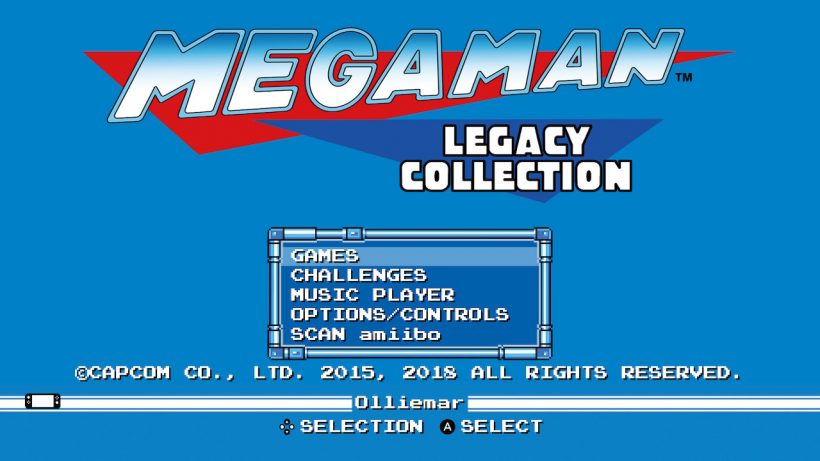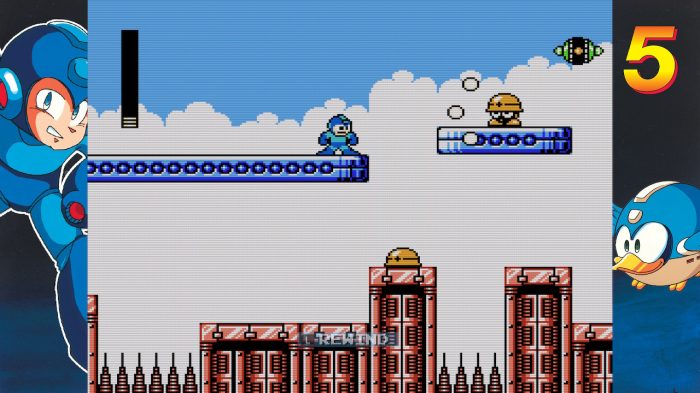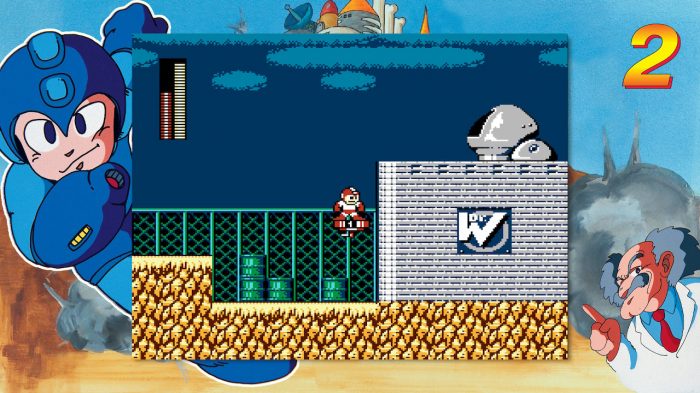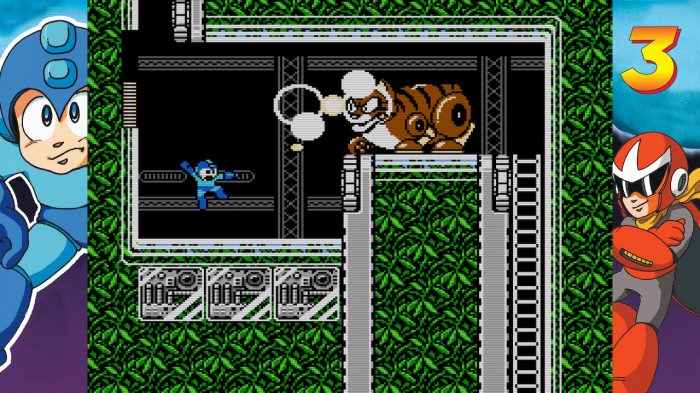An enduring legacy.
The original Mega Man series remains to this day one of the most celebrated selection of games of all time, with the ‘Blue Bomber’ becoming a legitimate icon within the gaming community, appearing in everything from Super Smash Bros to a rather questionable stint in Street Fighter X Tekken. It’s safe to say though, that despite the legion of dedicated fans across the world, there’s also a large portion of younger gamers out there that have never touched the classic NES games, and that’s where Mega Man Legacy Collection comes in.
Despite there currently being 10 games in the core Mega Man series, the initial compilation contains Mega Man 1 through 6 (Mega Man 7 through 10 are contained in the Legacy Collection 2, which we’ve also reviewed for your convenience!) in one handy package. Whilst the debate as to which game is the strongest of the bunch will continue to rage unabated (it’s Mega Man 3, by the way… YES, IT IS! Shush.), the quality on display with all six titles is unquestionably high throughout (though it’s fair to say that Capcom were running out of creative steam with Mega Man 5 & 6). These games play exactly as they should, from the pitch perfect jumps to the limitation of three bullets on the screen, and Capcom should be applauded for bringing this classic series to new systems in such a faithful way.
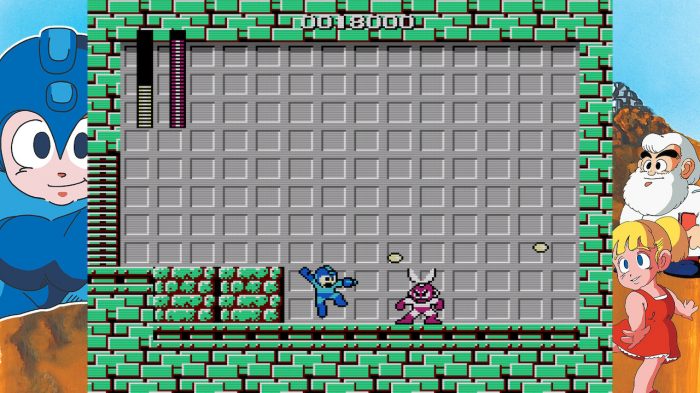
They look fantastic, too – even on huge screens, the games look incredibly sharp and vivid. By default, each game is bordered on the sides, and you can either choose to have these active or disable them completely, leaving the action in the centre of the screen. Should you choose to do so, you can also change the proportions of the display to fit the Switch’s screen or your docked screen entirely (though of course, doing so will stretch the visuals, so maybe don’t do it). Capcom have also provided the neat option to apply either a TV or monitor filter if you wish to experience the games in their true retro glory.
A word of warning to any newcomers to the series – Mega Man is not for the faint of heart. Like many games from the late 80s and early 90s, these titles pull no punches, and you will likely die a hell of a lot. Not to worry though, because with every death, there is a lesson learned. There are very few instances where the games feel genuinely unfair, and by studying and learning the level pattern and enemy placement, deaths come less frequently and eventually you’ll be breezing through even the toughest stages with little trouble at all.
If you’re really struggling though, every game features the handy ability to reverse time – so if you’re new to the series and find yourself dying on a particular section a lot, you can simply hold down the L button to reverse time and start over without losing a life. Don’t start to rely on it, however, because doing so will severely dilute the core Mega Man experience.
What’s truly great about Mega Man is that each game gives you the freedom to tackle the levels in whichever order you see fit. By defeating the end-of-level bosses (known here as ‘Robot Masters’), you will actually gain access to their unique weaponry, giving you an additional strategic option for the remaining stages. Having trouble getting up those pesky ladders in Mega Man 2’s Crash Man stage? Go back and clear Metal Man’s stage – gaining the Metal Blade item will allow you to shoot in practically any direction (not to mention it’s ludicrously powerful against a few Robot Masters). Nice! The ability to gain additional weaponry as you progress is an all to familiar element to games these days, and one that Metroid fans in particular will know all about, but its execution in the Mega Man series is arguably pioneering.
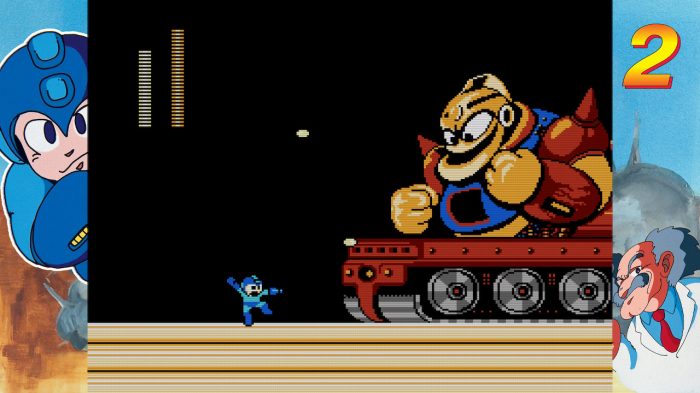
Progressing through the games is also a great history lesson in how they have developed over the years. Whilst visually there is only a steady increase in graphical fidelity from Mega Man 1 to 6, the games slowly introduce more and more elements to flesh out the experience significantly. Mega Man 2 ditches the first game’s mandatory score bar to focus on a sharper gameplay experience. Mega Man 3 introduces the slide ability, which is a fantastic way to clear the levels in a quicker manner. It also brings in the adorable character Rush, who fleshes out Mega Man 2’s item system. And just who is this Proto Man, anyway? You’ll find out.
Aside from the six games in their entirety, a big part of the Legacy Collection is the Challenges Mode. The wide selection of various challenges will either pit you against certain bosses in the games, or hurtle you through bit-sized sections of the many levels available. There are a lot of challenges available, and you’ll need to clear a certain number of them before you can advance to the latter stages. The good news, however, is that they’re entirely time-trial based, so you’re granted an infinite number of lives. The benefit of this is two-fold: it allows newcomers to get to grips with some of the levels’ more tricky sections in a relatively safe manner, whilst at the same time allowing veterans to flex their platforming skills and complete the challenges as quickly as possible.
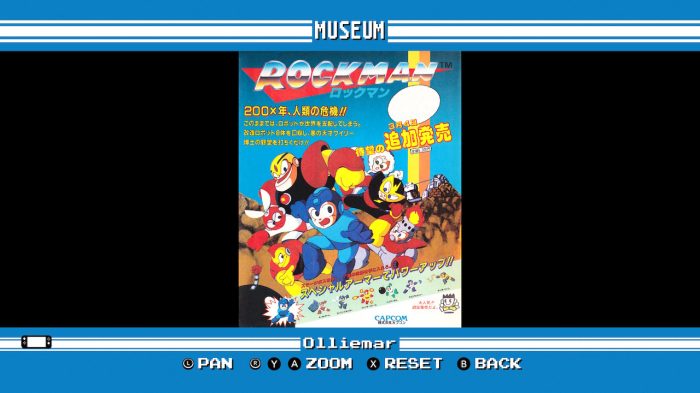
Of course, it wouldn’t be a celebratory collection without an art section, would it? Well, Mega Man Legacy Collection has this in spades. Each game has its own art section for you to peruse at your leisure, and they’re really quite extensive. Everything from concept art to promotional materials is covered, from box art to cartridge design and even a few of the Japanese manuals in their full glory, all 40 pages – it’s quite the history lesson (and seriously, what were they thinking with those US box art designs?).
Playing through these titles at least once should be a mandatory requirement for any serious gamer – the series (and entries 2 and 3 in particular) is held in high regard by critics and fans alike, and it’s easy to see why. The ability to now play these games on the go with Nintendo Switch is just all the more satisfying. Do yourself a favour and see what all the fuss is about.
Summary
Mega Man Legacy Collection is a seriously comprehensive celebration of the classic NES series, with a total of six games and a healthy sprinkling of brand new challenges. The dip in quality in the latter titles hold it back from a perfect score, but this is otherwise an essential purchase!

